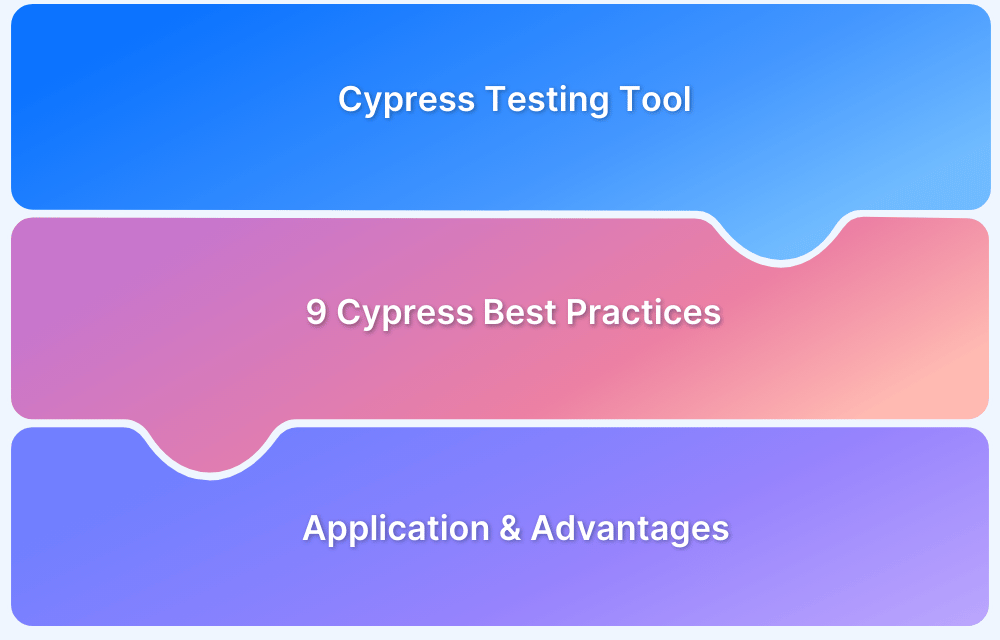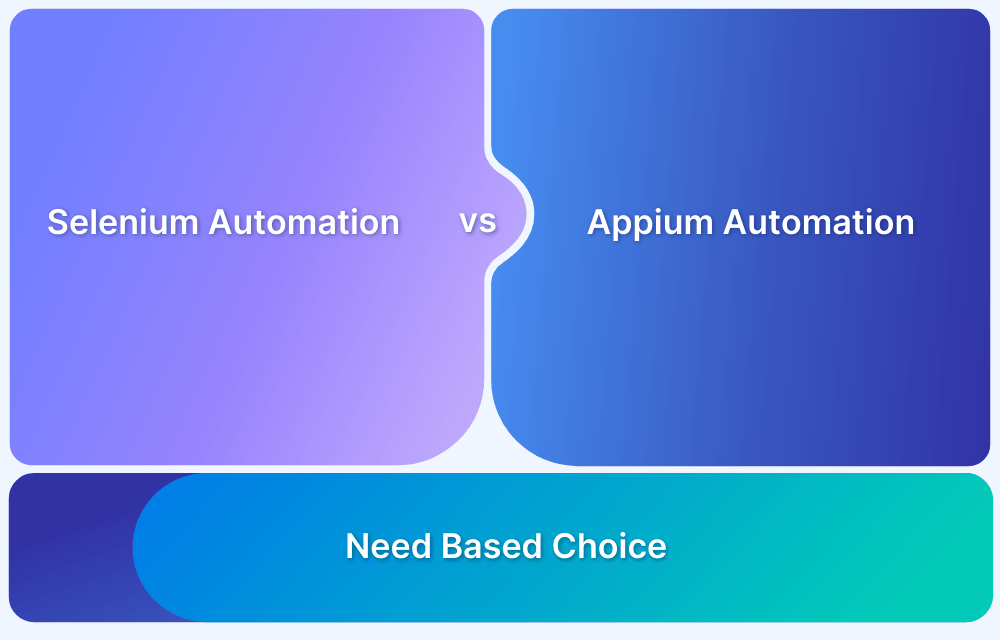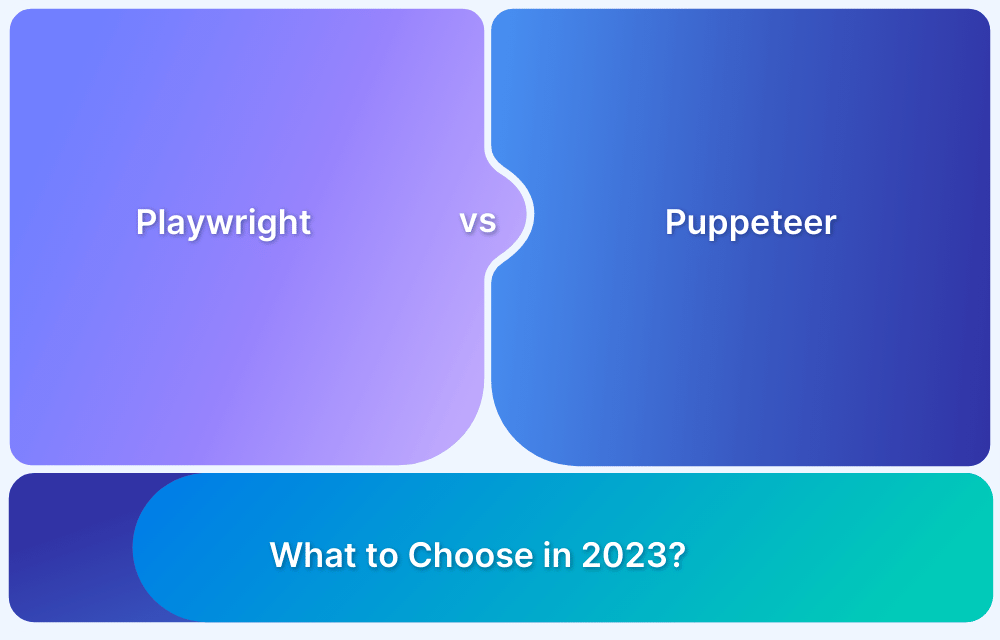Many teams choose a test automation framework based on popularity—what’s trending, what the community recommends—and I did the same.
But once I started building real test suites, the gaps appeared: tests grew flaky, slow, and hard to maintain, no matter how many plugins or config tweaks I added.
That’s when I realized the real issue was picking a framework without aligning it to the project’s needs, team skills, and long-term testing goals.
This article breaks down the most popular automation frameworks and how to choose the right one based on your project’s real requirements.
Overview
Test automation frameworks offer a structured way to design, build, and run automated test scripts, making the testing process more efficient, maintainable, and reusable.
Common Types of Test Automation Frameworks
- Linear Framework: Simple, script-based tests executed step by step.
- Modular Framework: Breaks tests into reusable modules for easier maintenance.
- Data-Driven Framework: Separates test logic from test data for expanded coverage.
- Keyword-Driven Framework: Uses action keywords to create tests without heavy coding.
- Hybrid Framework: Combines multiple approaches for greater flexibility.
- Behavior-Driven Development (BDD) Framework: Uses Gherkin syntax for readable, business-friendly test scenarios.
Key Benefits of Test Automation Frameworks
- Ensures consistency and structure across tests.
- Reduces maintenance effort with reusable components.
- Improves test accuracy by minimizing human error.
- Enables faster execution and quicker feedback cycles.
- Supports scalability as projects and test suites grow.
- Enhances collaboration between QA, developers, and business teams (especially with BDD).
What are Test Automation Frameworks?
Test automation frameworks are a set of rules and corresponding tools that are used for building test cases. It is designed to help engineering functions work more efficiently.
The general rules for automation frameworks include coding standards that you can avoid manually entering, test data handling techniques and benefits, accessible storage for the derived test data results, object repositories, and additional information that might be utilized to run the tests suitably.
Top 18 Test Automation Frameworks in 2026
After researching extensively and analyzing real user feedback, I narrowed down a list of test automation frameworks that teams can genuinely rely on.
I focused on factors that actually impact day-to-day testing—stability, cross-browser coverage, ease of maintenance, ecosystem maturity, CI/CD compatibility, and quality of documentation.
Best Test Automation Frameworks
- Selenium: A widely adopted open-source framework that excels at cross-browser testing and supports multiple programming languages.
- Cypress: A fast, developer-friendly tool designed for modern JavaScript applications with automatic waits and real-time reloads.
- Playwright: A powerful framework offering reliable cross-browser automation with built-in test isolation, parallelism, and robust API testing support.
- WebdriverIO: A versatile Node.js-based framework that integrates smoothly with modern tooling and supports both web and mobile testing.
- TestCafe: A simple, zero-configuration framework that runs tests directly in browsers without requiring WebDrivers or complex setups.
- NightwatchJS: An easy-to-use JavaScript framework that provides end-to-end testing with built-in assertions and seamless Selenium and WebDriver support.
- Appium: The go-to open-source solution for automating native, hybrid, and mobile web apps across iOS and Android using a single API.
- Cucumber: A BDD framework that enables writing clear, human-readable test scenarios using Gherkin syntax, improving collaboration across teams.
- Puppeteer: A high-control automation framework for Chrome and Chromium, ideal for rendering checks, PDF generation, and performance testing.
- Gauge: A lightweight, markdown-driven testing framework that emphasizes readability and modularity for maintainable test suites.
Here’s a breakdown of each framework to help you understand what it offers, where it excels, and when it’s the right fit.
Note: We have fact checked the entire article and updated the vendor order to reflect the best options. We have also added insights from experts automation testers.
1. Selenium
Selenium is a widely-used, open-source automation testing tool designed for web applications. It supports various browsers and programming languages, making it flexible and widely adopted.
With its powerful components like WebDriver and Grid, it helps in automating web application testing across different environments.
Pricing: Free / Open-Source
Key Features of Selenium:
- Supports multiple programming languages (Java, Python, C#, etc.)
- Cross-browser and cross-platform testing
- Integration with various CI/CD tools
- Large community and extensive documentation
Components of Selenium Test Automation
- Selenium IDE: Selenium IDE helps to record and play back your tests.
- Selenium Grid: Helps to run tests across multiple machines parallelly.
- Selenium WebDriver: Selenium WebDriver is most useful in running the Selenium tests across the browser.
- Selenium RC: Selenium RC helps write test cases in different programming languages to automate UI tests for web applications against any HTTP website. It is not much in use these days.
Advantages:
- Open-source, no licensing cost.
- Supports multiple programming languages (Java, Python, C#, etc.).
- Compatible with major browsers (Chrome, Firefox, Safari).
- Supports cross-platform testing (Windows, Linux, Mac).
- Allows parallel execution using Selenium Grid.
Disadvantages:
- Requires setup and customization, which can be difficult for beginners.
- Limited support for mobile testing compared to other tools.
- Dependency on browser-specific drivers, causing slower test execution.
- High maintenance with third-party packages for reporting and assertions.
- Challenges with modern web frameworks like React, Angular.
2. Cypress
Cypress has changed the UI automation framework mindset by providing rich features. It is one of the trending test automation tools in the market. Cypress is an Open Source Tool that provides Cypress Dashboard as a professional service with the priced package.
Pricing: Free for Starter pack and the paid plans for teams start at $67 per month
Key Features of Cypress:
- Runs directly in the browser for faster execution
- Real-time reloads and automatic waiting
- Built-in debugging and time-travel feature
- Strong support for modern JavaScript frameworks
Advantages:
- Easy setup and installation process.
- Built-in support for API, unit, and end-to-end testing.
- Fast and reliable tests with automatic waiting.
- Interactive test runner with real-time feedback.
- Good documentation and community support.
Read More: Cypress End to End Testing: Tutorial
Disadvantages:
- Supports only JavaScript/TypeScript, limiting language flexibility.
- Limited cross-origin support (issues with multi-domain applications).
- No built-in support for the Page Object Model pattern.
- Difficult to manage parallel testing setups.
- Lacks native support for mobile app testing.
3. Playwright
Playwright was launched in 2020, and within a few years, it has matured and attracted many users. This is because of their aggressive release strategy and well-documented code.
Playwright is an Open source tool.
However, it is attached to the Microsoft brand. It is one of the pioneers in headless browser testing, which makes it popular.
Pricing: Free / Open-Source
Key Features of Playwright:
- Supports Chromium, Firefox, and WebKit
- Handles multiple browser contexts
- Network interception and mocking capabilities
- Auto-wait for elements and actions
Advantages:
- Supports multiple languages (JavaScript, Python, Java, C#).
- No WebDriver dependency for faster execution.
- Allows testing across multiple browsers (including Safari on Windows).
- Supports parallel test execution and cross-browser testing.
- Built-in debugging tools (Playwright Inspector, Trace Viewer).
Disadvantages:
- Limited support for native mobile app testing.
- WebKit only provides Safari testing on Windows (not full Safari).
- Some language bindings are unstable at times.
- No direct Cucumber support without third-party plugins.
- Newer tool with fewer established resources compared to Selenium.
Learn More: Playwright vs Selenium: Which to choose
4. WebDriverIO
WebdriverIO is not a new framework and has existed for a long time. WebdriverIO is somewhat similar to Selenium with JavaScript, as it uses Selenium libraries internally. It is Open source and part of the OpenJS foundation.
Pricing: Free / Open-Source
Key Features of WebDriverIO:
- Supports both Selenium and DevTools protocols
- Rich plugin architecture
- Built-in test runner with parallel execution
- Integration with various services and reporters
Advantages:
- Supports a wide range of browsers and mobile testing.
- Extensible with many plugins and custom integrations.
- Parallel testing and multi-window support.
- Good support for the Page Object Model pattern.
- Works with both JavaScript and TypeScript.
Disadvantages:
- Relies on WebDriver for execution, adding an extra layer of complexity.
- Requires migration to new versions with each update.
- Documentation may not be comprehensive enough for beginners.
- Relatively slow compared to WebDriver-based frameworks.
- Complex setup for advanced features like parallel testing.
5. TestCafe
TestCafe is a Node.js-based testing framework that requires no browser driver, offering fast and reliable test automation for web applications.
Pricing: Free / Open-Source
Key features of TestCafe:
- No browser plugins or WebDriver required
- Tests run in real browsers
- Supports JavaScript and TypeScript
- Automatic waiting and smart assertion query mechanism
Advantages:
- Easy setup with no additional dependencies.
- Supports parallel testing and multiple browsers.
- Stable and fast test execution.
- Built-in support for Page Object Patterns.
- Suitable for beginners with simple syntax and good documentation.
Disadvantages:
- Limited to JavaScript/TypeScript for scripting.
- No support for third-party assertion libraries.
- Only supports CSS selectors for element identification.
- Customization options are more limited compared to other frameworks.
- Requires learning TestCafe’s specific syntax and API.
6. NightwatchJS
NightwatchJS is a NodeJS-based framework built with NodeJS that uses the Webdriver Protocol. BrowserStack maintains Nightwatch. Nightwatch can be used for End to End testing, API Testing, Unit testing, and Integration Testing using the combination of NodeJS services and NightWatchJS API.
Pricing: Free / Open-Source
Key Features of NightwatchJS
- All-in-one testing solution with built-in test runner
- Supports Selenium WebDriver and DevTools protocol
- Simple syntax for writing tests
- Integration with popular CI/CD tools
Advantages of the NightwatchJS
- NightwatchJS is easy to install and setup
- NightwatchJS test scripts are more readable
- It can be used for different types of testing
- It supports multiple browser testing, such as Chrome, Firefox, Edge, etc.
- NightwatchJS framework is easy to customize or extend
- NightwatchJS supports page object pattern
Limitations of NightwatchJS
- Since NightwatchJS uses Selenium in the backend, any limitation of Selenium will also follow in NightwatchJS.
7. Appium
Appium is an open-source UI automation framework that supports native mobile application automation. With Appium, one can test Android, iOS, and windows SDK native mobile apps. Appium has a good GUI that helps inspect and efficiently write the code.
Pricing: Free / Open-Source
Key Features of Appium:
- Cross-platform mobile testing for iOS and Android
- Supports multiple programming languages
- Utilizes WebDriver protocol for automation
- No need to modify the app for testing
Advantages of Appium:
- Appium is an open-source library, saving costs for the license.
- Cross-Platform Support Appium Provides cross-platform support for Safari on IOS and Chrome and in the built browser for Android, and the test works seamlessly across the devices.
- Appium supports multiple programming languages such as Java, Ruby, C#, PHP, and Python
- Appium framework can be easily integrated with the Selenium framework.
- Supports real devices, emulators, and simulators
- Appium provides a recording tool that is easy for beginners to start testing mobile applications.
- Appium supports cloud-based testing such as Browserstack, etc.
- Appium can be easily integrated with DevOps tools.
Disadvantages of Appium
- Setting up the Appium framework requires extra effort and expertise in coding.
- Integrating reports is difficult compared to other frameworks.
- Appium supports Android versions 4.3 and above
- Appium’s support for the hybrid application is complicated; switching from a browser to a native app requires writing complex code
Appium is the most popular framework for mobile testing. However, the setup requires coding expertise. So the beginner might feel complicated. Appium can be integrated with Selenium; you can seamlessly make the framework work across the computer and mobile with the customized framework. If you already have a Selenium-based framework ready and looking for a tool to extend the framework for mobile applications, then Appium is the best choice.
Read More: How to set up your Appium Grid
8. Cucumber
Cucumber is an Open Source framework for Behavior Driven Development and Testing (BDD). Cucumber comes in various flavors, such as Java, Javascript, SpecFlow for C#, etc.
Cucumber is most popular because of its integration with different types of frameworks. Nowadays, almost all major automation frameworks support the Cucumber framework. Cucumber Tests are written in Gherkin language, called feature files, and the implementation is written in a step definition file.
Pricing: Free / Open-Source
Key Features of Cucumber
- Behavior-Driven Development (BDD) framework
- Uses Gherkin syntax for test scenarios
- Enhances collaboration between technical and non-technical stakeholders
- Integrates with various testing tools like Selenium
Advantages of Cucumber
- Easy to write the test, since it is in natural Gherkin language format.
- The business teams can understand the features and test cases
- High reusability can be achieved without technical knowledge
- Easy to translate business requirements to test cases
Disadvantages of Cucumber
- Cucumber is just a layer on top of your testing framework. Cucumber alone can’t be used for building a framework. So the testers must have skills in the TDD framework like Selenium and Cypress
- Maintaining the Cucumber framework is challenging.
9. Puppeteer
Puppeteer is an open-source framework managed by Google. Puppeteer is built with NodeJS and supports Javascript/Typescript programming languages. Puppeteer is shipped with Apache 2.0 License. Puppeteer is the best tool for speed and stability, but its main problem is that it officially supports only Chromium-based browsers.
Pricing: Free / Open-Source
Key Feature of Puppeteer:
- Headless browser automation for Chrome and Firefox
- Provides high-level API for browser control
- Supports screenshot and PDF generation
- Useful for web scraping and automated testing
Advantages of Puppeteer
- Puppeteer supports headless browser testing.
- It supports executing custom JavaScript making it easy to interact with dynamic content.
- Puppeteer is often used for end-to-end testing, integration testing, and functional testing.
- Puppeteer provides detailed error messages and debugging capabilities.
Read More: How to start with Puppeteer Debugging
Disadvantages of Puppeteer
- Puppeteer does not include built-in test management features, such as test case organization, reporting, or result tracking
- It operates in a single-threaded environment, hence needs additional setup or configuration like BrowserStack Automate to run Parallel Tests.
- Cross Browser Testing with Puppeteer can be a challenge as it does not natively support other browsers like Firefox, Safari, or Edge.
- Puppeteer is tightly coupled with Chrome/Chromium, tests may not always reflect how other browsers handle the same web content.
10. Gauge
Gauge is an Open Source Test Automation framework, mostly used for Acceptance Testing. Gauge tests contain two files, the specification file, which is similar to the feature file in Cucumber. Still, the syntax will be different and the other file is the implementation file which is similar to the definition file in Cucumber.
Gauge can be integrated with C#, Java, JavaScript ruby, etc. It is easy to Integrate with DevOps tool and also supports running parallel tests. However, as the user base is less, the community support for the Gauge is considerably low.
Pricing: Free / Open-Source
Key Features of Gauge:
- Lightweight cross-platform test automation
- Supports multiple languages like Java, C#, and JavaScript
- Uses Markdown for test specification
- Plugin-based architecture for extensibility
Advantages of Gauge
- Through integration with tools like Selenium, Gauge supports cross-browser and cross-device testing.
- Gauge integrates well with version control systems like Git.
- Gauge integrates seamlessly with popular CI/CD tools like Jenkins, Bamboo, and GitLab CI.
- Gauge has a growing ecosystem of plugins that extend its functionality.
- Gauge supports different programming languages like Java, C#, Ruby, and Python.
Disadvantages of Gauge
- Gauge has a steep learning curve.
- It has Limited Built-In Features since it focuses more on modularity.
- Gauge may experience performance issues when handling very large or complex test suites.
- It lacks detailed documentation which makes troubleshooting difficult.
11. Mocha
Mocha is a flexible and feature-rich JavaScript test framework running on Node.js. It’s often used for backend and frontend testing and works seamlessly with assertion libraries like Chai.
Pricing: Free
Key Feature of Mocha
- JavaScript test framework for Node.js
- Supports asynchronous testing
- Provides flexible and accurate reporting
- Works well with assertion libraries like Chai
Advantages:
- Supports asynchronous testing using async/await.
- Highly flexible and works with various assertion libraries (e.g., Chai).
- Detailed and customizable reporting options.
- Easily integrates with other tools and frameworks.
- Simple and readable syntax, ideal for unit and integration testing.
Also Read: Synchronous vs Asynchronous in JavaScript
Disadvantages:
- Requires separate setup for assertion and mocking libraries.
- May need more configuration for structured projects.
- Lacks built-in support for browser automation.
- Limited out-of-the-box support for test parallelization.
- Debugging can be tricky without proper configurations.
Also Read: How to Test Selenium Node.JS with Mocha
12. Jasmine
Jasmine is a behavior-driven development (BDD) framework for testing JavaScript code. It’s known for its clean syntax and ability to test synchronous and asynchronous code without relying on other tools.
Pricing: Free / Open-Source
Key Features of Jasmine
- Behavior-Driven Development framework for JavaScript
- No external dependencies required
- Runs in browsers and Node.js
- Provides spies, mocks, and stubs for testing
Advantages:
- No need for external assertion or mocking libraries.
- Easy-to-read BDD-style syntax.
- Supports both synchronous and asynchronous testing.
- Provides built-in spies for mocking and tracking function calls.
- Works well with Angular and similar frameworks.
Disadvantages:
- Limited customization compared to frameworks like Mocha.
- Can be verbose for complex test scenarios.
- No built-in support for browser automation.
- Less active community compared to modern tools like Jest.
- Reporting features are minimal without external plugins.
13. Serenity BDD
Serenity BDD is a Java-based open-source library for writing cleaner, more maintainable acceptance tests. It integrates seamlessly with Selenium, Cucumber, and JUnit to offer rich reports and automate user stories in a business-readable format.
Pricing: Free / Open-Source
Key Features of Serenity BDD:
- Enhances Selenium and Appium with BDD capabilities
- Generates rich test reports
- Integrates with JUnit and Cucumber
- Supports automated acceptance testing
Advantages:
- Combines test automation with living documentation.
- Powerful and visually appealing HTML reports.
- Integrates with Cucumber, JUnit, and WebDriver.
- Promotes reusable steps and modular test code.
- Ideal for Agile teams practicing BDD.
Disadvantages:
- Steep learning curve for beginners.
- Complex setup and configuration.
- Best suited for Java-based projects; limited language support.
- Heavy framework can slow down execution with large test suites.
- May require additional plugins for broader tool integration.
14. Robot Framework
Robot Framework is a generic open-source automation framework designed for acceptance testing and robotic process automation (RPA).
Pricing: Free / Open-Source
Key Features of Robot Framework:
- Keyword-driven test automation
- Supports web, mobile, API, and desktop testing
- Extensible with Python and Java libraries
- Integration with CI/CD tools
Advantages:
- Keyword-driven testing makes it highly readable and accessible.
- Supports integration with Selenium, Appium, REST APIs, and more.
- Extensive library ecosystem for extending functionality.
- Platform-independent and supports parallel execution.
- Rich reporting and log output by default.
Disadvantages:
- Performance can lag with large-scale test suites.
- Not suitable for complex programming logic due to limited flow control.
- Requires learning its unique syntax and structure.
- Tests can become verbose and hard to maintain if not structured well.
- Primarily Python-based; fewer options for integration with other languages.
15. Taiko
Taiko is a free and open-source Node.js browser automation tool developed by the creators of Gauge. It is designed for reliable and readable browser automation, focusing on modern web applications.
Pricing: Free / Open-Source
Key Features:
- Smart selectors that wait automatically
- Easy syntax using JavaScript
- Headless and headful browser support
- Works seamlessly with Chromium-based browsers
Advantages:
- Simple and developer-friendly syntax
- Automatically handles waits and retries
- Works well with dynamic web apps
- Integrates nicely with Gauge for BDD-style tests
Disadvantages:
- Limited browser support (mainly Chromium)
- Smaller community and ecosystem than Selenium or Cypress
16. Karate
Karate is a unified test automation framework that combines API, Web UI, performance, and mocking tests in one DSL-based tool. It’s ideal for teams looking to simplify test development with minimal coding.
Pricing: Free version available and the paid plan starts at $100 /year
Key Features:
- Simple Gherkin-like syntax for writing tests
- Native support for HTTP, JSON, XML, and UI testing
- Supports parallel test execution
- Built-in test doubles and mocks
Advantages:
- Great for full-stack testing (API + UI)
- No need for writing custom Java code
- Lightweight setup and easy to maintain
- Offers performance testing capabilities
Disadvantages:
- Less flexibility for advanced UI test logic
- Not ideal for highly interactive UI workflows
17. RedwoodJS Testing Framework
RedwoodJS is a full-stack JavaScript/TypeScript framework with built-in testing support for components, services, and scenarios. Though framework-specific, its testing ecosystem is robust and integrates seamlessly into CI workflows.
Pricing: Free / Open-Source
Key Features:
- Built-in support for Jest and React Testing Library
- Isolated testing of API and UI layers
- Mocking and fixtures support for realistic scenarios
- CLI utilities for fast test generation and execution
Advantages:
- Great DX for full-stack JS applications
- No need to configure external testing tools
- Tight integration with GraphQL and Prisma
Disadvantages:
- Tied to RedwoodJS apps
- Less suitable for teams not using full-stack JS frameworks
18. OwlityAI
OwlityAI is an AI-driven test automation framework focusing on reducing manual effort in test maintenance.
Pricing: Free version available for a single user; paid plan starts at $299 billed monthly
Key Features:
- AI-based test generation and maintenance
- Self-healing tests that adapt to UI changes
- Integration with CI/CD pipelines
- Analytics and reporting dashboards
Advantages:
- Minimizes manual test maintenance
- Enhances test stability with AI-driven healing
- Provides insights through analytics
Disadvantages:
- Relatively new in the market
- May have limited community support
Benefits of Test Automation Frameworks
Here are the key reasons why test automation frameworks are important:
- Increased Efficiency: Automation frameworks streamline the testing process by reducing the need for repetitive manual testing tasks leading to faster feedback and shorter development cycles.
- Consistency and Reliability: Automated tests follow the same steps every time they run, which helps ensure consistent execution and reliable results. This reduces the likelihood of human error and provides more dependable test outcomes.
- Code Reusability: Test automation frameworks promote the reuse of test scripts and components. This modular approach allows testers to create reusable test cases and libraries, reducing redundancy and effort.
- Scalability: Automation frameworks can execute a high volume of tests across various environments and configurations, making it easier to scale testing efforts as the application grows.
- Early Defect Detection: Automated helps detect defects early in the development process, leading to faster resolution and reduced costs.
- Regression Testing: Automation frameworks are particularly useful for regression testing, where the same tests need to be repeated to ensure new changes haven’t adversely affected existing functionality.
- Improved Test Coverage: Automation allows for more extensive test coverage by enabling the execution of a large number of test cases and scenarios, including edge cases and complex scenarios that might be impractical to test manually.
- Efficient Use of Resources: By automating repetitive testing tasks, teams can focus on more complex testing activities and exploratory testing. This optimizes the use of human resources and allows for better allocation of testing efforts.
- Reduced Costs: It leads to long-term savings by reducing the time and effort required for manual testing. The efficiency and scalability of automation can result in significant cost benefits over time.
- Enhanced Accuracy: Automated tests are less prone to errors compared to manual tests. They execute the same steps precisely each time, leading to more accurate and consistent results.
- Continuous Testing Support: Automation frameworks integrate well with CI/CD pipelines, enabling continuous testing of code changes. This helps maintain code quality and stability throughout the development lifecycle.
Types of Automated Testing Frameworks
Here’s a quick overview of the most commonly used automation testing frameworks, each offering unique advantages for test efficiency and maintainability:
- Data-Driven Framework: This framework stores test data externally (e.g., Excel, CSV), allowing testers to run the same test script with multiple data sets, ideal for validating different input scenarios without rewriting code.
- Keyword-Driven Framework: This framework separates test logic from test scripts using keywords stored in external files. Each keyword represents a specific action, enabling non-programmers to create tests by combining predefined actions.
- Hybrid Framework: This hybrid framework combines the strengths of data-driven and keyword-driven frameworks. It enhances flexibility and reusability by supporting multiple test scenarios with structured logic and external data.
- Linear Scripting Framework: Also known as Record and Playback, this framework is straightforward and script-based. It’s suitable for simple test cases but lacks modularity, making it harder to scale and maintain.
- Module-Based Framework: Divides the application into separate modules, each with its own script. Changes in one module don’t affect others, making it highly maintainable and reusable. However, one key disadvantage is that creating and managing modules can be time-consuming.
Selecting the right test automation framework is crucial for ensuring efficient and scalable testing. Factors like project requirements, team expertise, and tool compatibility should guide your decision-making process. The right framework can improve test execution speed, reliability, and maintainability.
BrowserStack experts can help you evaluate your options and choose the framework that aligns best with your project needs.
Expert insights are essential to help you evaluate the various Automated Testing Frameworks, in order to meet your project requirements, team expertise, and tool compatibility
Get Expert QA Guidance Today
Schedule a call with BrowserStack QA specialists to discuss your testing challenges, automation strategies, and tool integrations. Gain actionable insights tailored to your projects and ensure faster, more reliable software delivery.
How to Choose the Right Test Automation Framework?
The decision should be based on a clear understanding of several key factors:
- Project Needs: Consider the size, complexity, and nature of the application. For example, data-heavy apps may benefit from a data-driven approach.
- Team Skillset: Choose a framework that aligns with your team’s expertise. Complex tools may require advanced programming knowledge and training.
- Maintainability & Scalability: Look for frameworks that support modular test structures and can scale with growing project demands.
- Tool Integration: Ensure the framework integrates smoothly with your CI/CD pipeline, version control, and reporting tools.
- Customization Options: A flexible framework that allows custom reporting, plugin support, or additional features can better suit evolving needs.
Once you’ve identified the framework that fits your needs, the next challenge is running it reliably at scale across real browsers and devices. This is where BrowserStack Automate can significantly streamline and accelerate your end-to-end testing workflow.
Scale Your Test Automation with BrowserStack Automate
Running automated tests across real devices and browsers becomes increasingly complex as your test suite grows. Teams often struggle with maintaining device labs, keeping browser versions up to date, and ensuring consistent environments for reliable test execution.
BrowserStack Automate simplifies this by providing instant access to a real device cloud, enabling teams to scale their existing automation seamlessly.
With Automate, you can:
- Run tests in parallel to drastically reduce execution time and speed up release cycles.
- Test on 3500+ real devices and browsers, ensuring coverage that matches real-world user environments.
- Gain deeper insights with tools for visual logs, video recordings, network logs, and console output, making debugging faster and more accurate.
- Integrate seamlessly with your CI/CD pipeline through ready-to-use plugins for Jenkins, GitHub Actions, GitLab, CircleCI, Azure DevOps, and more.
- Use smart test orchestration features like intelligent retries, test grouping, and optimized test distribution for maximum efficiency.
By shifting infrastructure management to a reliable real-device cloud, teams can focus entirely on writing better tests, delivering higher-quality applications, and releasing faster with confidence.
Conclusion
Selecting the most appropriate test automation framework requires a strategic approach that considers your organization’s specific needs.
Rather than choosing a framework based on popularity, focus on long-term maintainability, scalability, and alignment with technical requirements.
Conducting a thorough evaluation, including a proof of concept, can help avoid costly framework changes later. Regardless of the tool you choose, testing on real devices using platforms like BrowserStack Automate ensures accurate results and a better end-user experience.






